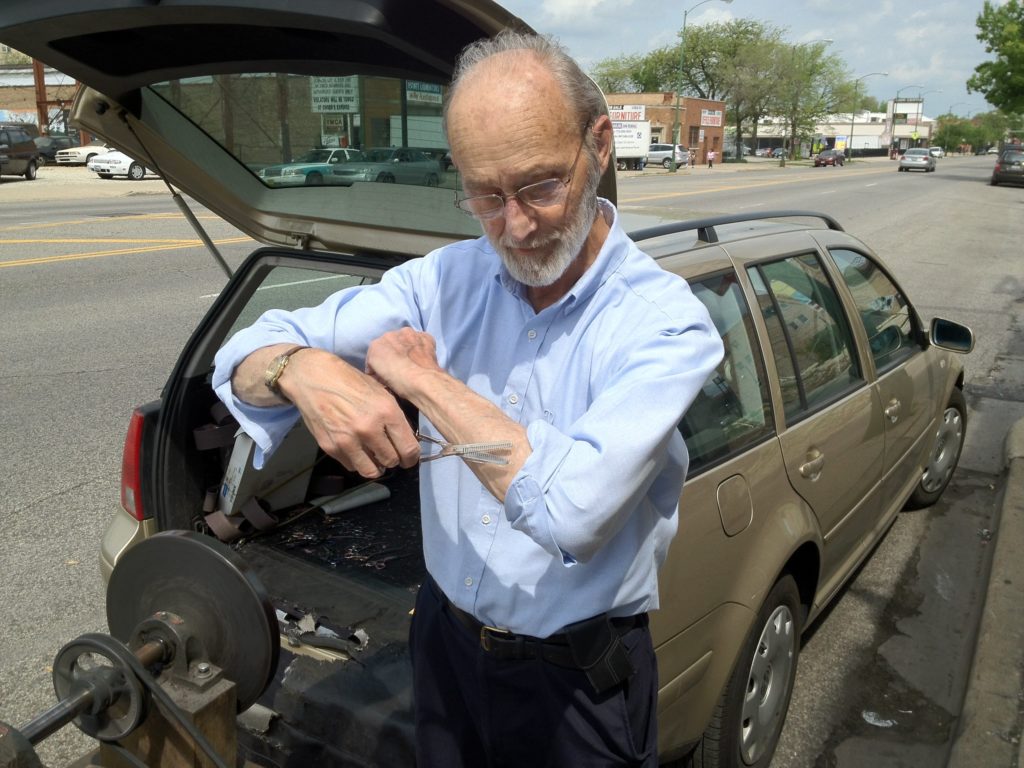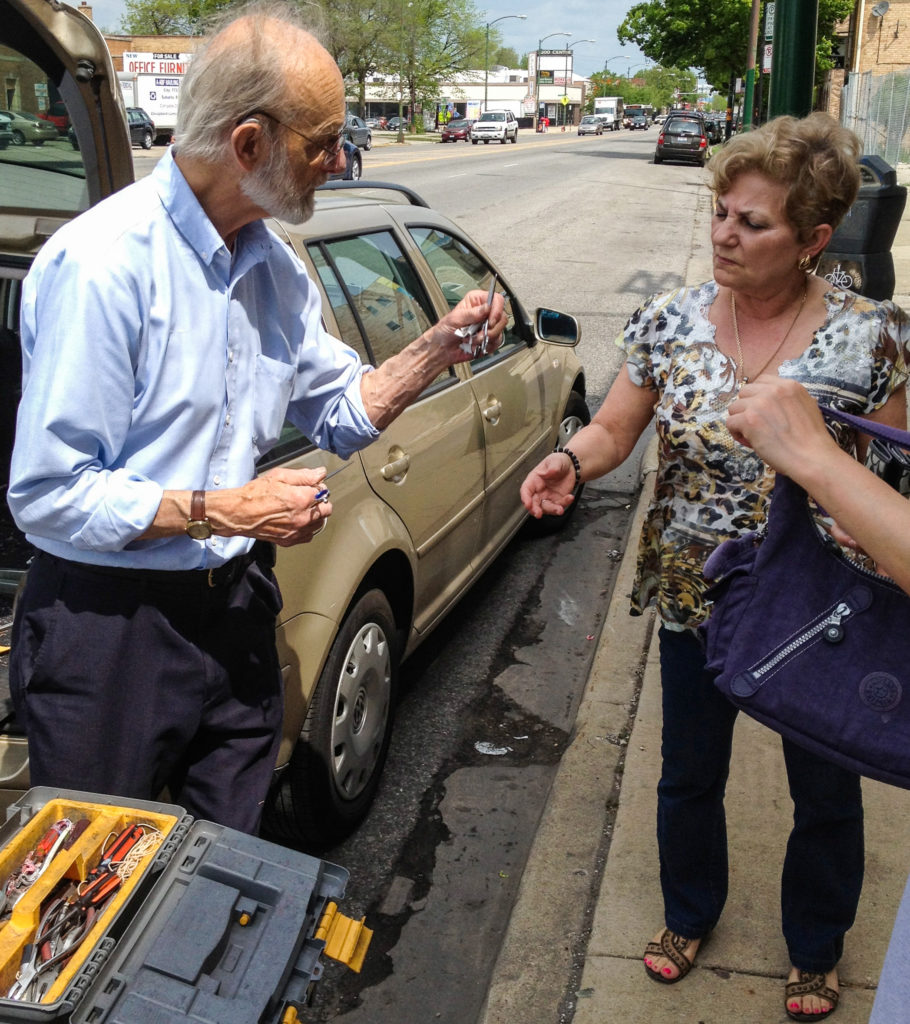

As anyone who cares knows, we in Northern California had an annular eclipse on Sunday. “Annular” means ring-shaped, and this term for an eclipse denotes one in which the moon at apogee, the highest point in its orbit relative to the Earth, crosses the sun’s disk but does not entirely block it (as it does in a true total eclipse). The result is a “ring of fire.” The sun is dimmed but still quite bright.
This is as close as I’ve ever lived to a real live total eclipse, so I took it upon myself to drive about 170 miles north into the area where the maximum annular eclipse could be observed. Those possibly wiser and possessed of less nervous energy than myself decided to stay here in Berkeley, where the eclipse was going to be about 90 percent of maximum.
Headed north on Interstate 5, I found myself imagining the gears of the solar system turning, the moon sliding invisible in the clear sky toward the brilliant sun. My idea was to get off the interstate somewhere north of the town of Willows, which was near the southern limit of the annular zone, and head east toward the foothills that rise east of the Sacramento River. I exited at County Road 7 at the northern end of Glenn County, heading over to old Highway 99, the former main route up the valley, and then noodled around on smaller roads in southern Tehama County headed toward the river. I stopped a couple of times to scope out the sun action (I was unprepared to photograph the eclipse so was depending on projecting the image onto an index card with a pair of binoculars) and take some pictures (landscape highlight: Mount Lassen in the distance). I hit one dead end, reversed field, and in due course wound up in the town of Los Molinos (“The Mills”), about 15 miles southeast of Red Bluff, as the hour of maximum eclipse neared. I found a promising-looking eastbound route called Wilson Road. A mile or two outside town, I passed an intersection marked with a “no outlet” sign, and figured I ought to park and get ready for the big moment.
The eclipse experience: The sky was noticeably darker the closer it got to the eclipse maximum. The temperature, which started out in the low 90s, seemed to fall about 10 degrees or so. Once stopped, I called home and got the Berkeley sky report as I projected the eclipse image on my little white card. Somewhere a magnificent cosmic event was taking place, but I was standing amid pastures fumbling with office supplies.
But the scene was beautiful. I heard moving water and realized a small irrigation ditch was running down one side of the road. After the eclipse maxed out and the sun started to re-emerge and the heat came back on, I snapped a few pictures. I was curious about the irrigation works, which included a few hand-operated gates. I took a few pictures of the main ditch, then walked down the road a hundred yards to where it crossed under the road and took more pictures there. After a few minutes, I heard the sound of a bike tires on gravel, and a youngish guy, say mid-30s, showed up with a little cattle dog. “Can I help you?” he asked. I was trespassing by stepping off the public road, he said. I told him I just happened to be up there looking at the eclipse and was interested in the irrigation. He looked and sounded very skeptical and almost dumbfounded when I told him I’d driven up from Berkeley. I gave him my card, which includes the name of my public-radio employer. “And what do you … do … at Northern California Public Broadcasting?” he wanted to know. His tone was what I’d imagine a government agent might hear after happening upon a still in yonder hollow. “I’m a news editor,” I said. I explained more: that I took an interest in how water works here in California, that it’s not well-enough understood, that I was familiar with some of the creeks in the area and their spring-run chinook salmon. He took all this in with an expression that said, “Uh huh.” In fact, I think he actually said, “Uh huh.” We probably talked for 15 minutes, during which time he allowed that folks in the Los Molinos area are defensive about water because people (environmentalists) are trying to take it away (to restore flows for fish and wildlife). He got a call from his wife on his cellphone and headed back up to his house. I headed back onto the road.
A car drove up. Two young guys were sitting in the front seat, wearing short-sleeve white shirts with black ties. Mormons on mission, for sure, which they confirmed when I asked them. They were curious what I was doing out there, so we talked about the eclipse. Elder Miller, who was driving, said he’d gotten a nice photo shooting through a piece of welding glass (I should have gotten a piece of welding glass). We talked a little Latter-Day Saints talk, and I tried to avoid anything that might make me look open-minded enough to consider a religious pitch. I did give them my email address, though, so Elder Miller could send me a copy of his eclipse picture. He did. (That’s it below).
I went back to my car. The sun was low enough that it was shining through the grasses along the roadside. I took a few frames (a couple examples at the top of the post). Then I was ready for the drive home.



